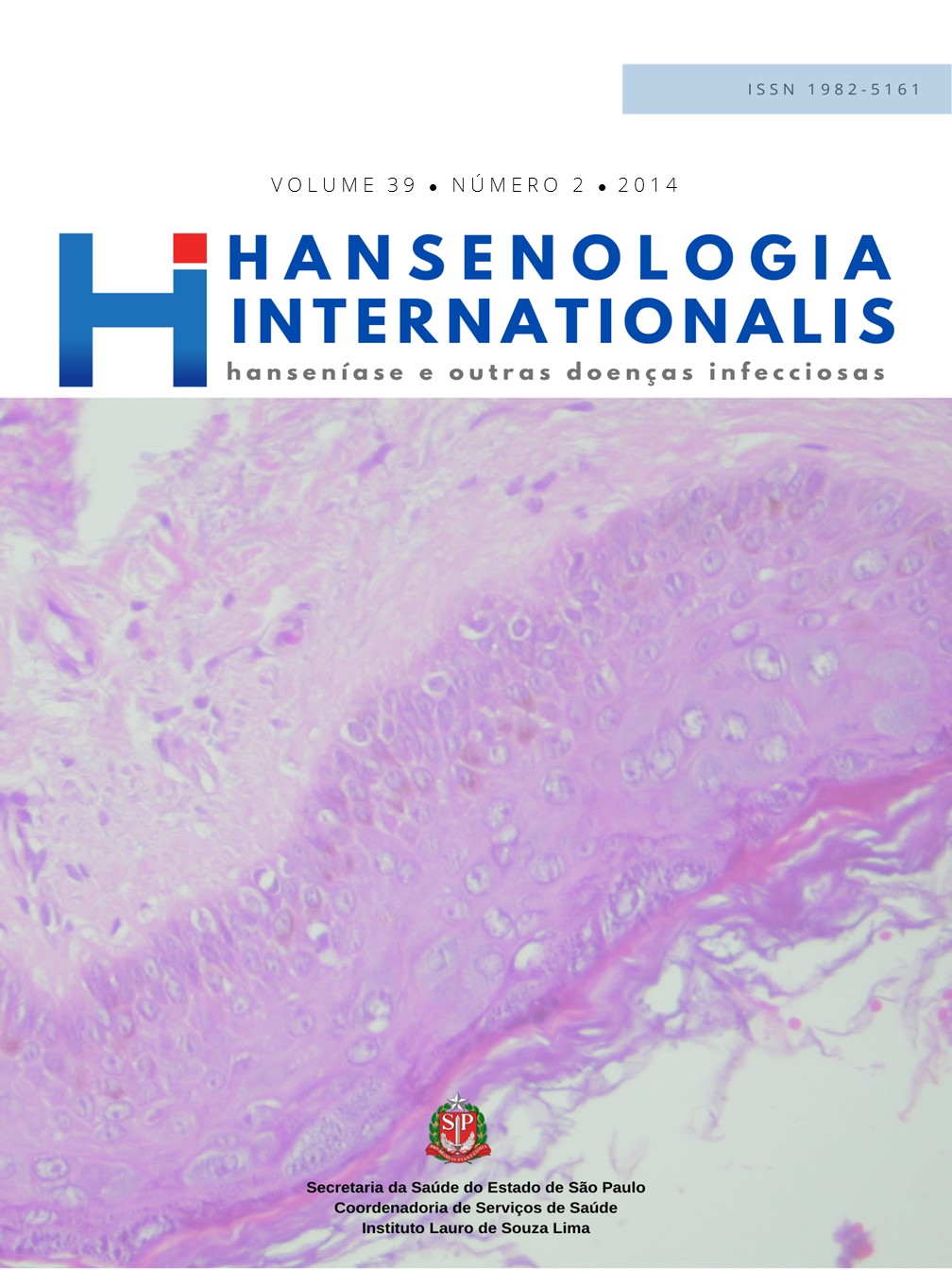Abstract
This study aimed at determining whether individuals affected by leprosy properly performed self-care practice and its possible interfering factors. It is a documental, observational and descriptive study of household survey. The sample was composed of eleven patients evaluated during one year in a municipality with 120.000 inhabitants in SP state. Clinical data and prescription care records were obtained from the medical files. The interview and observation of self-care practices were held at home. The participants were asked to identify the problems resulting from the disease, to demonstrate which, how and when they performed the necessary self-care, which was classified as: held properly, held partially or not performed. The study was approved by the Committee of Ethics in Research (Nº 06/2007). Among the five individuals who presented grade 2 disability, three partially performed and two did not perform self-care. They demonstrated difficulties in accepting the physical involvement and in incorporating the daily practices for multiple causes factors, so did those individuals with grade 1disability. The need of maintaining labor activities, with full-time exposure to physical trauma, can lead to concealment of the disease, either for themselves or for the society. It may also hinder self-care actions, either by lack of time or for not accepting the disease. The paternalistic, fragmenting and mechanical model of health care leads to a tendency of patients to rely on institutional services, deconstructing the autonomy and individual responsibility for their general health status, discouraging self-care actions at home.
References
2 Araújo MG. Hanseníase no Brasil. RevSocBras Trop. 2003;36(3):373-82.
3 Ministério da Saúde (BR), Secretaria de Vigilância em Saúde, Departamento de Vigilância Epidemiológica. Manual de Prevenção de Incapacidades. 3a ed. Brasília: Ministério da Saúde; 2008.
4 Duerksen F. Reabilitação. In: Opromolla DVA, Baccarelli R, organizadores. Prevenção de incapacidades e reabilitação em hanseníase. Bauru: Instituto Lauro de Souza Lima; 2003. p. 3-4.
5 Seshadri D, Khaitan BK, Khanna N, Sagar R. Dehabilitation in the era of elimination and rehabilitation: a study of 100 leprosy patients from a tertiary care hospital in India. Lepr Rev. 2015;86(1):62-74.
6 George JB e Colaboradores. Teorias de enfermagem: os fundamentos à prática profissional.4a ed. Porto Alegre: Artmed; 2000. 375 p.
7 Brito KKG, Soares MJGO, Costa MML, Oliveira SHS.Práticas e limitações de clientes com hanseníase no cuidar das lesões cutâneas. Rev Enferm UFPE on line. 2014:8(1):16-7.doi: 10.5205/r euol.4843-39594-1-SM.0801201403
8 Nardi SMT, Paschoal VDA, Chiaravalloti-Neto F, Zanetta DMT. Deficiências após a alta medicamentosa da hanseníase: prevalência e distribuição espacial. Rev SaúdePública. 2012;46(6):969-77.
9 Alberts CJ, Smith WCS, Meima A, Wang L, Richardus JH. Potential effect of the World Health Organization’s 2011-2015 global leprosy strategy on the prevalence of grade 2 disability: a trend analysis. Bull World Health Organ. 2011;89(7):487-95.
10 Silva AC, Ferreira RC, Ferreira MAA, Ribeiro MTF. Association between the degree of physical impairment from leprosy and dependence in activities of daily living among the elderly in a health unit in the State of Minas Gerais. RevSocBrasMed Trop. 2014;47(2):212-17.
11 Pieri FM, Ramos ACV, Crispim JA, Pitiá ACA, Rodrigues LBB, Silveira TRS, et al . Fatores associados às incapacidades em pacientes diagnosticados de hanseníase: um estudo transversal. Hansen Int. 2012;37(2):22-30.
12 Leite IF, Arruda AJCG, Vasconcelos DIB, Santana SC, Chianca KSV. A qualidade de vida de pacientes com hanseníase crônica. Rev Enferm UFPE on line. 2015;9(6):8165-71.doi: 10.5205/r euol.7585-66362-1-ED.0906201503
13 Deepak S, Hansine PE, Braccini C. Self-care groups of leprosy-affected people in Mozambique. Lepr Rev. 2013;84(4):283-91.
14 Miranzi SSC, Pereira LHM, Nunes AA. Perfil epidemiológico da hanseníase em um município brasileiro, no período de 2000 a 2006. RevSocBrasMed Trop. 2010;43(1):62-7.
15 Souza IA, Ayres JA, Meneguin S, Spagnolo RS. Autocuidado na percepção de pessoas com hanseníase sob a ótica da complexidade. Esc Anna Nery. 2014;18(3):510-4.
16 Teasdale K, De Wildt G, Das Pranab K, Virmond MC, Galan NG, Prado RB, et al. The patient perspective of the diagnostic process for leprosy in Brazil. An exploratory study. Lepr Rev. 2015;86(1):21-36.
17 Galan NGA, Marciano LHSC, Fonseca MS, Marques T, Prado RBR, Cury M Filho, et al. Ambulatório de autocuidado em Hanseníase: descrição de resultados. Hansen Int. 2011;36(Supl 1):223.
18 Batista TVG, Vieira CSCA, Paula MAB. A imagem corporal nas ações educativas em autocuidado para pessoas que tiveram hanseníase. Physis. 2014;24(1):89-104.
19 Nardi SM, Ikehara E, Pedro HS, Paschoal VD. Characterization of the profession/occupation of individuals affected by leprosy and the relationship with limitations in professional activities. Indian J Lepr. 2012;84(1):1-8.
20 Baialardi KS. O estigma da hanseníase: relato de experiência em grupo com pessoas portadoras. Hansen Int. 2007;32(1):27-36.
21 Goffman E. Estigma: notas sobre a manipulação da identidade deteriorada. 4a ed. Rio de Janeiro: Guanabara; 1988.
22 Silveira MGB, Coelho AR, Rodrigues SM, Soares MM, Camillo GN. Portador de hanseníase: impacto psicológico do diagnóstico. Psicol Soc. 2014;26(2):517-27.
23 Sermrittirong S, Van Brakel WH. Stigma in leprosy: concepts, causes and determinants. Lepr Rev. 2014;85(1):36-47.
24 Beluci ML, Borgato MH, Galan NGA. Avaliação de cursos multiprofissionais em hanseníase. Hansen Int. 2012;37(2):47-53.

This work is licensed under a Creative Commons Attribution 4.0 International License.
